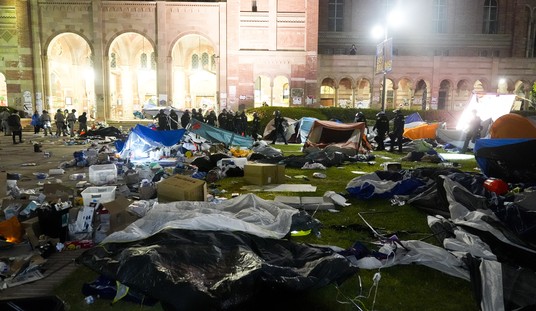No one knows yet what caused the two massive explosions that ripped through the warehouse district in the Chinese city of Tianjin, one of the busiest ports in the world yesterday, throwing hundreds of huge shipping containers dozens of yards and mangling hundreds more.
Chinese officials are still trying to assess the extent of the damage, but 50 are known dead and at least 500 injured — 71 critically. Rescuers are still digging through the wreckage looking for survivors. Firefighters have suspended their efforts, fearing the volatility of some of the chemicals it is believed were the proximate cause of the explosions.
Indeed, one of the big worries now is toxic fumes. The warehouse that is believed to be ground zero for the explosions was filled with some pretty nasty stuff;
sodium cyanide (NaCN), toluene diisocyanate (TDI) and calcium carbide (CaC2), all of which pose direct threats to human health on contact. NaCN in particular is highly toxic. Ca(C2) and TDI react violently with water and reactive chemicals, with risk of explosion.
Thousands of cars waiting to be shipped are little more than charred hulks:
The Wall Street Journal reports that a supply problem now exists of raw materials being shipped into the port, including iron ore for China’s massive steel industry:
Tianjin and its port are at the center of one of China’s economic zones—regions with special laws and ownership restrictions to facilitate international trade. Along with numerous Chinese-owned manufacturing facilities, major Western corporations, including Airbus Group SE, John Deere and Wal-Mart Stores Inc. operate factories or distribution centers in the area. Factories across the region rely on Tianjin to export their goods and to import iron ore, coal, oil and other commodities. The port is also one of the top importers of cars in China.
Tianjin ranks 10th globally in container traffic, handling about 14 million twenty-foot-equivalent units, the standard measure for containers, according to Alphaliner, a research firm. That’s about the same number as the combined volume at Los Angeles and Long Beach, the largest U.S. port complex, though it lags the busiest southern Chinese ports, including Shanghai and Shenzhen.
Tianjin “is absolutely an enormous port … it’s of huge importance in respect to the distribution of goods around the northern region of China, especially the Beijing metropolitan area,” said John Manners-Bell, chief executive of U.K.-based logistics research firm Transport Intelligence Ltd.
He said even minor delays could have a vast impact on supply chains because major ports like Tianjin serve as focal points for global shipping as well as transportation inland. He added that it’s too early to know how the explosions will affect logistics for companies that use the port.
“This is a huge, huge risk … ports are transport nodes within the supply chain,” Mr. Manners-Bell said.
The explosions could potentially have an immediate effect on the price of iron ore imported by steelmakers, according to Nicolai Hansteen, an analyst with shipbroking firm Lorentzen & Stemoco AS in Oslo.
The port has been expanding its iron ore import capabilities in recent years to accommodate the largest ore ships. In 2008, China Cosco Holdings Ltd., a state-owned shipping line, established a new headquarters for its dry bulk shipping operations in Tianjin. The port imported 25 million tons of iron ore in the first half of 2015, or roughly 6% of China’s projected total imports this year, according to data analyzed by Lorentzen.
Government data also show that Chinese steel mills have drawn down stocks of iron ore to roughly 80 million tons, or about 20 days’ supplies, Mr. Hansteen said.
“It’s fallen to a very precarious levels. Any disruption in that respect will be felt as a shortage, and it will be felt as high prices.”
The death toll is expected to rise dramatically. The company that runs the port says that dozens of its employees are missing, and they are still expecting to find bodies in the rubble.
It is expected to take many weeks for operations at the port to get back to normal. Meanwhile, you have to wonder if there isn’t a similar time bomb of toxic chemicals being stored at an American port just waiting for one careless worker, or one unlucky occurrence to cause a similar tragedy.











Join the conversation as a VIP Member